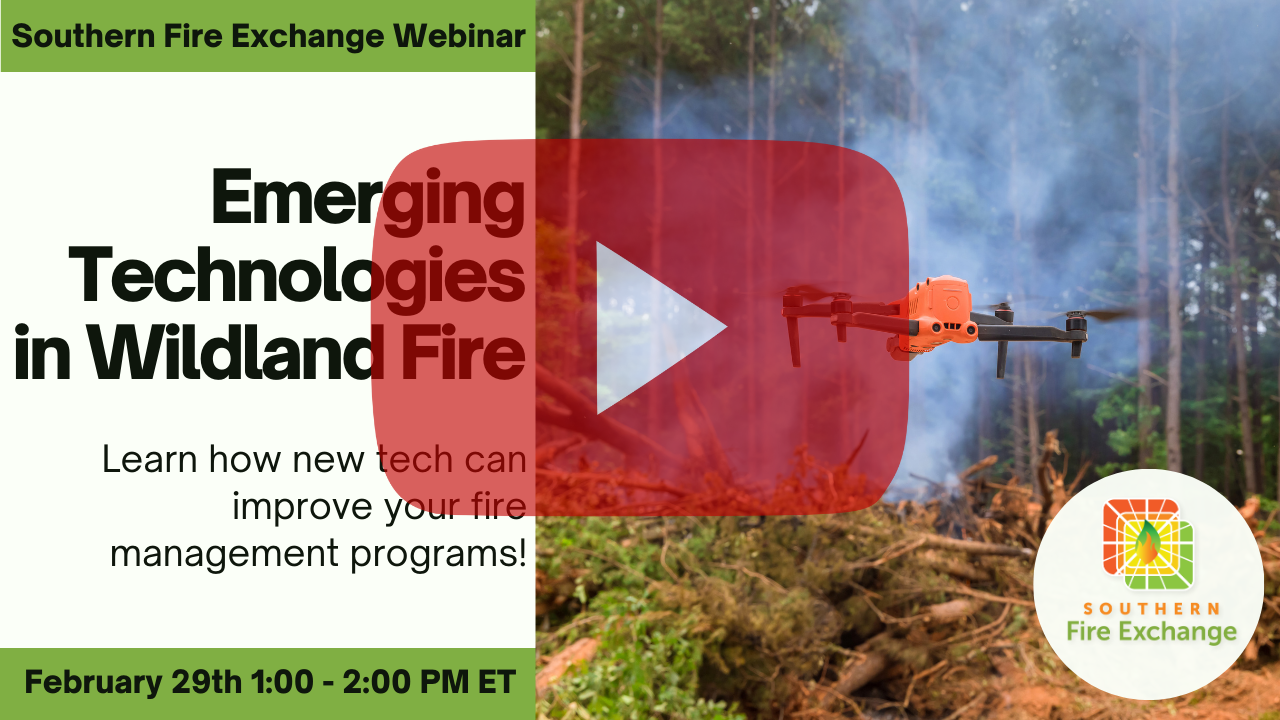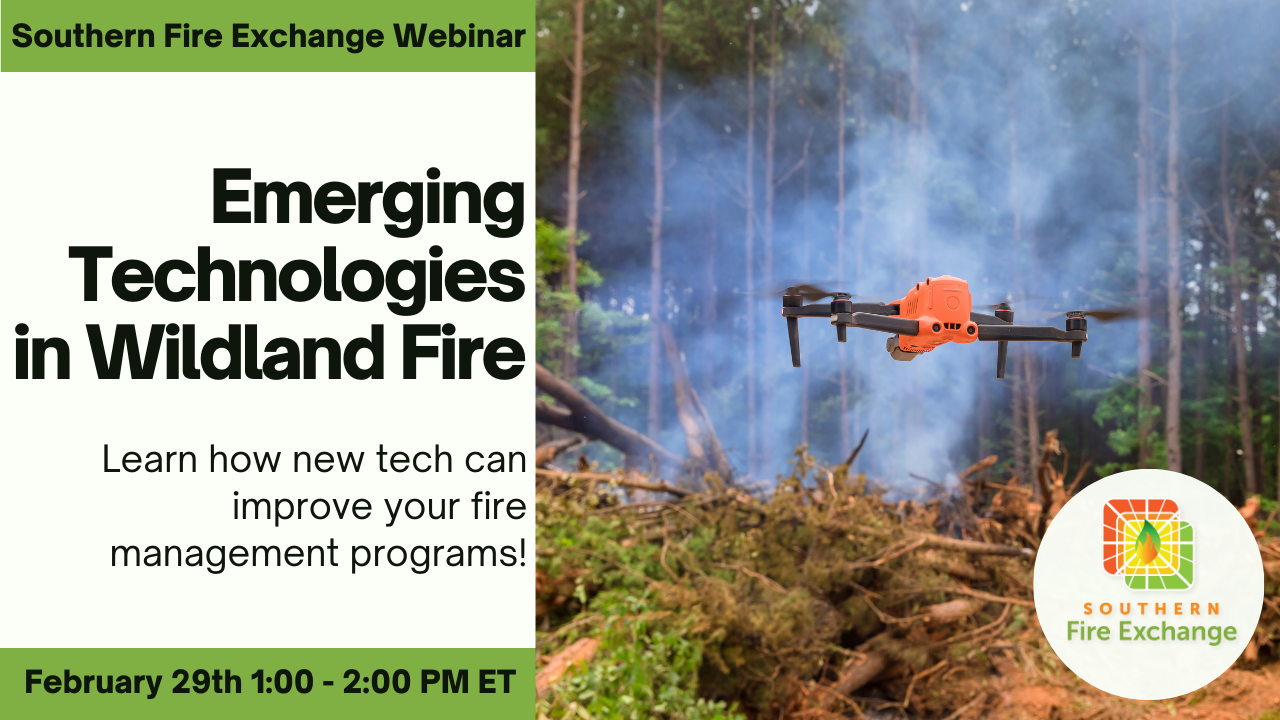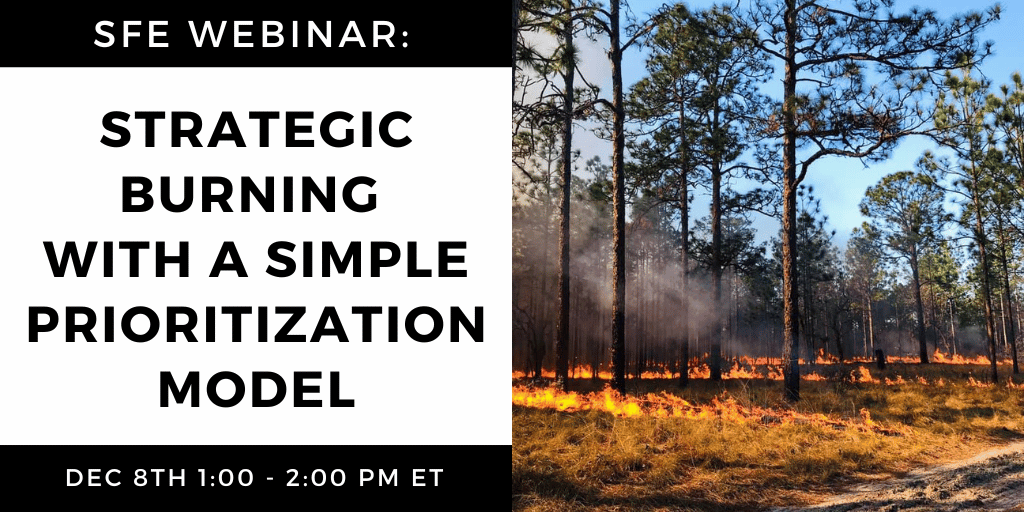
The recording of our February 29th webinar “Emerging Technologies in Wildland Fire” with Nathan Burmester from The Nature Conservancy North Carolina, is now on the SFE YouTube Channel. The webinar covered topics ranging from UAS (drones) to weather stations and thermal cameras. The chat was alive with tons of links to resources and products mentioned in the presentation. You can find all of those links in the notes on the YouTube recording.






